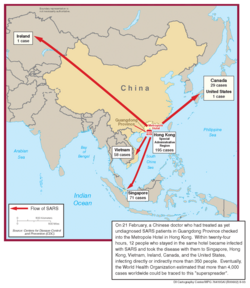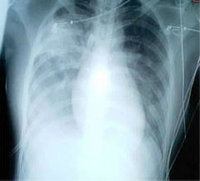SARS might as well be an acronym for Serious Apparel Retail Scare.
In the last few months, this contagion has had an undeniable impact on sourcing procedures and stymied efforts to travel freely in certain high-traffic zones of Far East Asia. However, the SARS fear factor, according to most sources close to DSN Retailing Today, is based more on hyperbole than fact--and most are saying it's business as usual in the international apparel trade.
"SARS has prompted us to take a lot of precautions with our people to make sure that they are O.K., but there has been no slowdown in production," said Steve Potter, buyer for Payless ShoeSource.
The drama that has accompanied this highly contagious, flu-like disease has raised the guard of international travelers everywhere. But the truth is that SARS is a much milder disease than first thought. Of the 388 suspected and probable cases reported to the United States Center for Disease Control (CDC) as of June 10, 2003, there have been no domestic fatalities. The death rate in Toronto, where there was a large outbreak due to its high Asian population, was low. No stringent travel restrictions are in place.
"Persons are requested to monitor their health upon arriving from a possibly SARS-infected area for 10 days. If a person does not have symptoms of SARS, it is not necessary for them to be quarantined," a health communications specialist at the CDC told DSN Retailing Today.
All the same, the fear of SARS is not unfounded. It has had a fairly high mortality rate in Asia, where virtually every U.S. corporation tied to mass retailing, from Levi Strauss to Target, now sources its wares. This has prompted many US retailers with a strong presence in Hong Kong and Toronto to curtail travel. For instance, at WalMart's annual shareholder meeting, which normally rallies its divisions from across the globe, groups of associates from its Chinese and Canadian operations were conspicuously absent.
Numerous manufacturers, who spoke to DSN Retailing Today on this subject on the condition of anonymity, said they were reluctant to make trips to the Far East to check production status, or that their staff was wary of doing so. Insurance plans, complex enough on American shores, are pushed to their limits overseas. A problem which is believed to have led to the untimely death from another medical problem of a Kenneth Cole footwear designer, a story recently publicized in New York Magazine.
Factory workers are also being affected. "There are reports that workers are scared and not showing up for work" noted Henry Stupp, vp, NTD Apparel. The scare has also affected just about every business in between, all of which have led to varying degrees of supply chain disruptions.
"Many airlines are canceling Southeast Asia to West Coast U.S. flights. This limits the availability of cargo capacity for companies shipping high-value goods in the bellies of these planes," noted Dr. John Mentzer, professor of marketing, logistics and transportation at the University of Tennessee's College of Business Administration in Knoxville, Tenn.
How quickly SARS will blow over is anyone's guess. However, most agree that its effect on the U.S. retail market is more bark than bite. As Limited Too's James T. Shimizu, vp of marketing, promotions and events, put it: "In terms of deliveries, we haven't seen any major issues."
COPYRIGHT 2003 Reproduced with permission of the copyright holder. Further reproduction or distribution is prohibited without permission.
COPYRIGHT 2003 Gale Group




